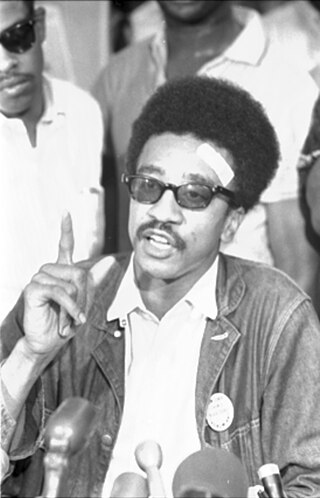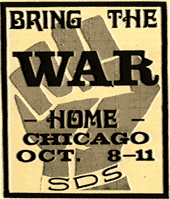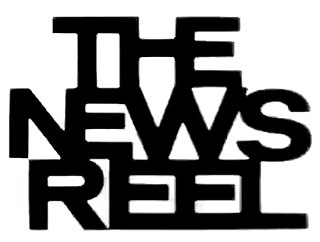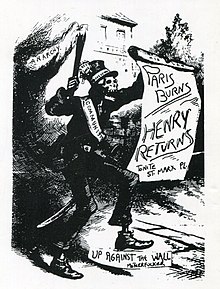Anarchist communism is a political philosophy and anarchist school of thought that advocates communism. It calls for the abolition of private property but retention of personal property and collectively-owned items, goods, and services. It supports social ownership of property and the distribution of resources "From each according to his ability, to each according to his needs".

Motherfucker, sometimes abbreviated as mofo, mf, or mf'er, is an English-language vulgarism. It is a form of the profanity fuck. The word is usually considered highly offensive. In common usage, however, it is rarely used in a literal way, which, under a standard reading, would mean an incestuous relationship with one's own mother. Rather, the word usually refers to a mean, despicable, or vicious person; or any particularly difficult or frustrating situation. Conversely, it can be used positively, as a term of admiration, as in the term badass motherfucker (BAMF), meaning a fearless and confident person.

Jamil Abdullah al-Amin, is an American human rights activist, Muslim cleric, black separatist, and convicted murderer who was the fifth chairman of the Student Nonviolent Coordinating Committee (SNCC) in the 1960s. Best known as H. Rap Brown, he served as the Black Panther Party's minister of justice during a short-lived alliance between SNCC and the Black Panther Party.
Anarcho-primitivism, also known as anti-civilization anarchism, is an anarchist critique of civilization that advocates a return to non-civilized ways of life through deindustrialization, abolition of the division of labor or specialization, abandonment of large-scale organization and all technology other than prehistoric technology and the dissolution of agriculture. Anarcho-primitivists critique the origins and alleged progress of the Industrial Revolution and industrial society. According to anarcho-primitivists, the shift from hunter-gatherer to agricultural subsistence during the Neolithic Revolution gave rise to coercion, social alienation, and social stratification.

A black bloc is a tactic used by protesters who wear black clothing, ski masks, scarves, sunglasses, motorcycle helmets with padding or other face-concealing and face-protecting items. The clothing is used to conceal wearers' identities and hinder criminal prosecution by making it difficult to distinguish between participants. It is also used to protect their faces and eyes from pepper spray, which is used by police during protests or civil unrest. The tactic also allows the group to appear as one large unified mass. Black bloc participants are often associated with anarchism, anarcho-communism, communism, libertarian socialism and the anti-globalization movement. A variant of this type of protest is the Padded bloc, where following the Tute Bianche movement protesters wear padded clothing to protect against the police.

ACAB, an acronym of the phrase "all cops are bastards", is a political slogan associated with people who are opposed to the police. It is typically written as a catchphrase in graffiti, tattoos or other imagery in public spaces. It is sometimes numerically rendered as "1312", representing the position of the letters in the English alphabet.
The history of anarchism is ambiguous, primarily due to the ambiguity of anarchism itself. Scholars find it hard to define or agree on what anarchism means, which makes outlining its history difficult. There is a range of views on anarchism and its history. Some feel anarchism is a distinct, well-defined 19th and 20th century movement while others identify anarchist traits long before first civilisations existed.

15 minutes of fame is short-lived media publicity or celebrity of an individual or phenomenon. The expression was inspired by a quotation misattributed to Andy Warhol: "In the future, everyone will be world-famous for 15 minutes." Attributed to two other people, the first printed use was in the program for a 1968 exhibition of Warhol's work at the Moderna Museet in Stockholm, Sweden. The phenomenon is often used in reference to figures in the entertainment industry or other areas of popular culture, such as reality television and YouTube.

The Days of Rage were a series of protests during three days in October 1969 in Chicago, organized by the emerging Weatherman faction of Students for a Democratic Society (SDS).

Unpopular Books is a publisher in London's East End, producing leaflets, pamphlets, and books.

The counterculture of the 1960s was an anti-establishment cultural phenomenon and political movement that developed in the Western world during the mid-20th century. It began in the early 1960s, and continued through the early 1970s. It is often synonymous with cultural liberalism and with the various social changes of the decade. The effects of the movement have been ongoing to the present day. The aggregate movement gained momentum as the civil rights movement in the United States had made significant progress, such as the Voting Rights Act of 1965, and with the intensification of the Vietnam War that same year, it became revolutionary to some. As the movement progressed, widespread social tensions also developed concerning other issues, and tended to flow along generational lines regarding respect for the individual, human sexuality, women's rights, traditional modes of authority, rights of people of color, end of racial segregation, experimentation with psychoactive drugs, and differing interpretations of the American Dream. Many key movements related to these issues were born or advanced within the counterculture of the 1960s.

The Boston Tea Party was a concert venue located first at 53 Berkeley Street in the South End neighborhood of Boston, Massachusetts, and later relocated to 15 Lansdowne Street in the former site of competitor, the Ark, in Boston's Kenmore Square neighborhood, across the street from Fenway Park. It operated from 1967 to the end of 1970. Its closing was due in part to the increasing cost of hiring bands who were playing more and more at large outdoor festivals and arena rock concerts.

Anarchism in Korea dates back to the Korean independence movement in Korea under Japanese rule (1910-1945). Korean anarchists federated across their end of the continent, including forming groups on the Japanese mainland and in Manchuria, but their efforts were perforated by regional and world wars.
Contemporary anarchism within the history of anarchism is the period of the anarchist movement continuing from the end of World War II and into the present. Since the last third of the 20th century, anarchists have been involved in anti-globalisation, peace, squatter and student protest movements. Anarchists have participated in armed revolutions such as in those that created the Makhnovshchina and Revolutionary Catalonia, and anarchist political organizations such as the International Workers' Association and the Industrial Workers of the World have existed since the 20th century. Within contemporary anarchism, the anti-capitalism of classical anarchism has remained prominent.
Angry Arts Week was an event organised by a group of radical artists based in Lower East Side, New York City in January 1967. It brought together such people as Michael Brown of the Pageant Players, Peter Schumann from the Bread and Puppet Theatre Osha Neumann, performance artist Carolee Schneemann, and the painter Ben Morea. They were particularly active opposing the Vietnam War.
The Pageant Players were a quasi-Marxist guerrilla street theatre group active in New York City from 1965 to 71. Their first performance was of The Paper Tiger Pageant in November 1965. They were founded by Michael Brown. They participated in Angry Arts week in January 1967.

Louis Waldon was an American film actor, whose career spanned nearly 45 years. He was born in Modesto, California.
Insurrectionary anarchism is a revolutionary theory and tendency within the anarchist movement that emphasizes insurrection as a revolutionary practice. It is critical of formal organizations such as labor unions and federations that are based on a political program and periodic congresses. Instead, insurrectionary anarchists advocate informal organization and small affinity group based organization. Insurrectionary anarchists put value in attack, permanent class conflict and a refusal to negotiate or compromise with class enemies.

The Newsreel, most frequently called Newsreel, was an American filmmaking collective founded in New York City in late 1967. In keeping with the radical student/youth, antiwar and Black power movements of the time, the group explicitly described its purpose as using "films and other propaganda in aiding the revolutionary movement." The organization quickly established other chapters in San Francisco, Boston, Washington, DC, Atlanta, Detroit, Chicago, Los Angeles, Washington, DC and Puerto Rico, and soon claimed "150 full time activists in its 9 regional offices." Co-founder Robert Kramer called for "films that unnerve, that shake people's assumptions…[that] explode like grenades in people’s faces, or open minds like a good can opener." Their film's production logo was a flashing graphic of The Newsreel moving in and out violently in cadence with the staccato sounds of a machine gun. A contemporary issue of Film Quarterly described it as "the cinematic equivalent of Leroi Jones's line 'I want poems that can shoot bullets.'" The films produced by Newsreel soon became regular viewing at leftwing political gatherings during the late 1960s and early 1970s; seen in parks, church basements, on the walls of buildings, in union halls, even at Woodstock." This history has been largely ignored by film and academic historians causing the academic Nathan Rosenberger to remark: "it is curious that Newsreel only occasionally shows up in historical studies of the decade."













